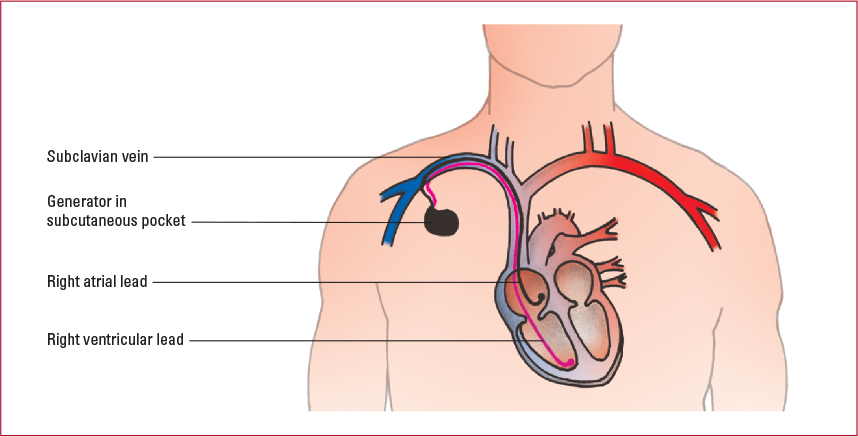The practitioner who implants the endocardial pacemaker usually selects a transvenous route and begins pacing lead placement by inserting a catheter percutaneously or by venous cutdown. Then, with a stylet and fluoroscopic guidance, the catheter is threaded through the vein until the tip reaches the endocardium. Lead placements For pacing lead placement in the atrium, the tip is usually anchored in the right atrial appendage or to the right atrial septum. For placement in the right ventricle, it is usually anchored within the right ventricular septum or in one of the interior muscular ridges, or trabeculae in the apex. Resynchronization therapy with a biventricular pacemaker requires a pacing lead to be placed in the coronary sinus that lies over the left ventricle. This enables capture of the left ventricular myocardium through the wall of the coronary sinus. Biventricular pacing improves outcomes and reduces mortality in certain patients. With the relatively new use of His bundle pacing, the right ventricular lead is placed in the right atrium next to the His–Purkinje network. This allows for depolarization of both ventricles via a normal conduction pathway. Both biventricular and His bundle pacing are an attempt to result in more physiologic pacing. Placing a leadless permanent pacemaker A leadless pacemaker is inserted percutaneously through a large (27 Fr) catheter in the femoral vein and placed in the right ventricle. Implanting the generator When the pacing lead is in the proper position, the pulse generator is secured in a subcutaneous pocket of tissue just below the clavicle. Changing the pacemaker’s battery or microchip circuitry requires the whole generator to be replaced. However, only a shallow incision over the previously made pocket and a quick generator exchange is done. 
|